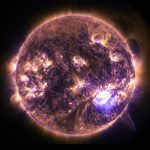New Magnet Test Brings Fusion Closer to Commercialization
We recently published a piece on fusion that focused on how smaller, more powerful magnets could harvest power from the sun and help the environment at the same time. Now, fusion has taken another step forward when it comes to its potential commercialization.
The MIT Experiment
Commonwealth Fusion Systems (CFS) and the Massachusetts Institute of Technology’s Plasma Science Fusion Center (PSFC) say they completed a successful test of one of the smaller magnets on Sunday, September 4th. According to their findings, the magnet reached 20 tesla, which is how a magnet’s strength is measured. For comparison, that number is 12 times greater than the magnetic field typically found in an MRI machine. During the experiment, researchers used high-temperature superconductors to help the magnets get to that mark.
The magnet also used just 30 watts of energy throughout the test, which is down significantly from the 200 million watts used by copper conducting magnets. Fusion itself is created when light nuclei merge into a single nucleus and release energy. As stated in our previous piece, commercializing fusion on earth would generate an almost unlimited amount of clean energy. Researchers say the magnets will allow machines to make more energy than it takes to create the reaction, known as net energy.
The project has also received around 250 million dollars in funding from donors like Jeff Bezos and Bill Gates. Right now, construction is underway on a fusion testing device known as SPARC. The plan is for the machine to achieve net energy by 2025, with a fusion power plant scheduled to be up and running by the early 2030s.
Visit Apex Magnets
To conduct experiments or projects of your own, browse our vast collection here at Apex Magnets. We have magnets fit for any project that you may have, whether it is for personal use or for your business. If you want to stay up to date on the latest in magnet news, like updates on fusion, subscribe to our newsletter to get our latest blog posts sent directly to your inbox.

